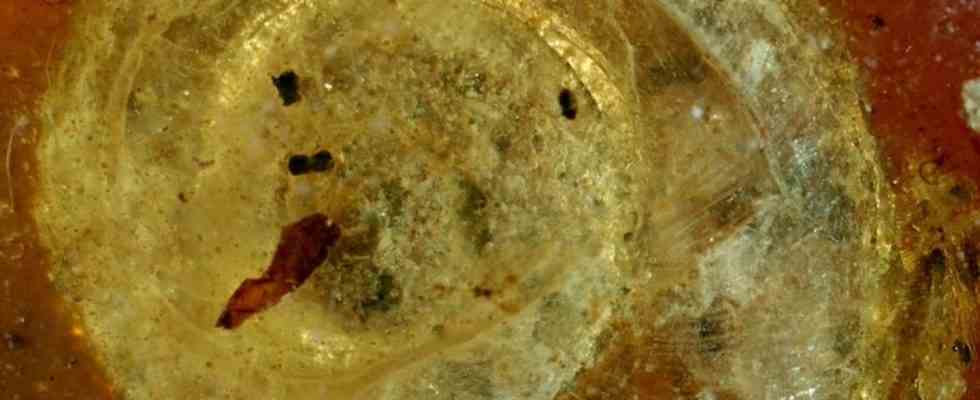natural history
Colmar exhibits 99 million year old fossil snail
The fossil snail was christened “Archaeocyclotus brevivillosus”. Her house, covered with short and bristly hair, is particularly striking. photo
© -/Natural History Museum Colmar/dpa
She once lived in Myanmar – and was at home both in the water and on land. Almost a hundred million years ago, the small snail benefited above all from its hairy shell.
A 99-million-year-old fossil snail is due to be on display at the Natural History Museum in Colmar from June 20. They will be on display along with a life-size reconstruction of one of the largest and most complete tyrannosaur skeletons, the museum confirmed. Studies have shown that it is a new species that, like the dinosaurs, dates back to the Cretaceous period.
The fossil snail is 9 millimeters long, 3.1 millimeters high and was christened “Archaeocyclotus brevivillosus”. Her house, covered with short and bristly hair, is particularly striking. According to a study published in December in the scientific journal Cretaceous Research, the hair allowed the animals to adapt from aquatic to terrestrial life, the museum specified.
The fossil was discovered last November in a piece of amber from Myanmar (formerly: Burma) and examined by a Franco-German research team. Jean-Michel Bichain, President of the Society for Natural History and Ethnography in Colmar and co-author of the “Cretaceous Research” study, explained that the snail must have gotten stuck in it at the time.
According to Bichain, there are 30 species of snails known in Burmese amber, a fossil resin extracted from Hukawng Valley. The fossil was discovered by an amber collector.
Report on “francebleu.fr”

